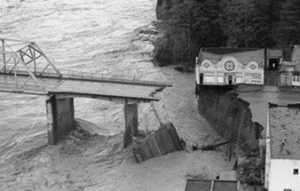Living with Extreme Floods in California

From California Water Blog – Floods and their consequences are a reality for many worldwide, including those living in California. This reality is evidenced by pictures of people stranded on roofs surrounded by water, people paddling down water-filled streets in makeshift boats, and farm fields and orchards covered in standing water. However, there is also growing acceptance that floods are natural, recurring events that have positive aspects, especially where they support migratory waterfowl, enhance fisheries, and sustain wetlands and their high diversity of organisms (Mount et al 2023). In fact, most communities on large rivers globally rely on annual flooding for soil nutrient replenishment, transportation, and maintenance of larger ecosystems that supply food resources (e.g., Amazon, Nile, Okavango, Ganges, Mekong rivers). In California much of our most productive farmland is actually former floodplain, including the once vast wetlands of the Central Valley and the bed of Lake Tulare (Moyle 2023). Most of our cities also are partially built on former floodplains. It is no wonder then that levee building, from the beginning, has been a major activity in the state (Kelley 1989). (more)


